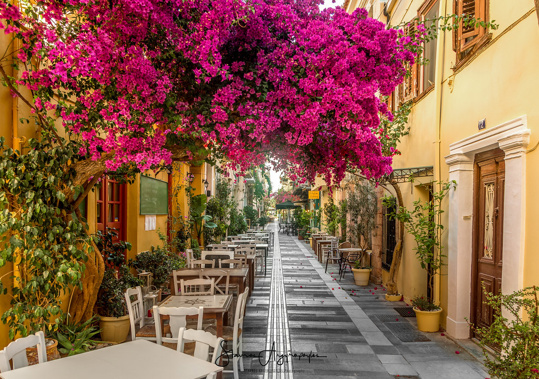
Beyond the heavily-trampled tourist trail of Athens and the Greek islands, the Peloponnese peninsula is the lesser-trafficked stuff of legends. It’s where myth meets history. Literally. It's from here that Paris of Troy eloped with Helen and the Argonauts set sail in search of the Golden Fleece. It’s where Hercules fought the Nemean lion and gods walked the earth, meddling in mortal affairs. Mythology aside, an escape to the Peloponnese also serves up epic history, from ancient Olympia to Mycenae. This large peninsula hangs from the rest of the Greek mainland by a narrow isthmus, just an hour's drive west of Athens. Its wild, mountainous landscape is dotted with the ruins of Mycenaean palaces, classical temples, frescoed churches, and countless hilltop castles and fortresses, built by Crusaders, Venetians and Ottomans.
Whether you’re doing day-trips from Athens, or planning a more leisurely jaunt around the Peloponnese, here’s a round-up of my favourite places. Like a siren of the Saronic Gulf, Epidaurus is a storied ancient Greek settlement, founded 3000 years ago, famed and revered across the Mediterranean as a place of miraculous healing. Back in the day, visitors travelled vast distances to the tranquil Sanctuary of Asclepius, the god of medicine and son of Apollo, to seek a cure for their ailments. Being licked by a snake was considered the most powerful curative remedy!
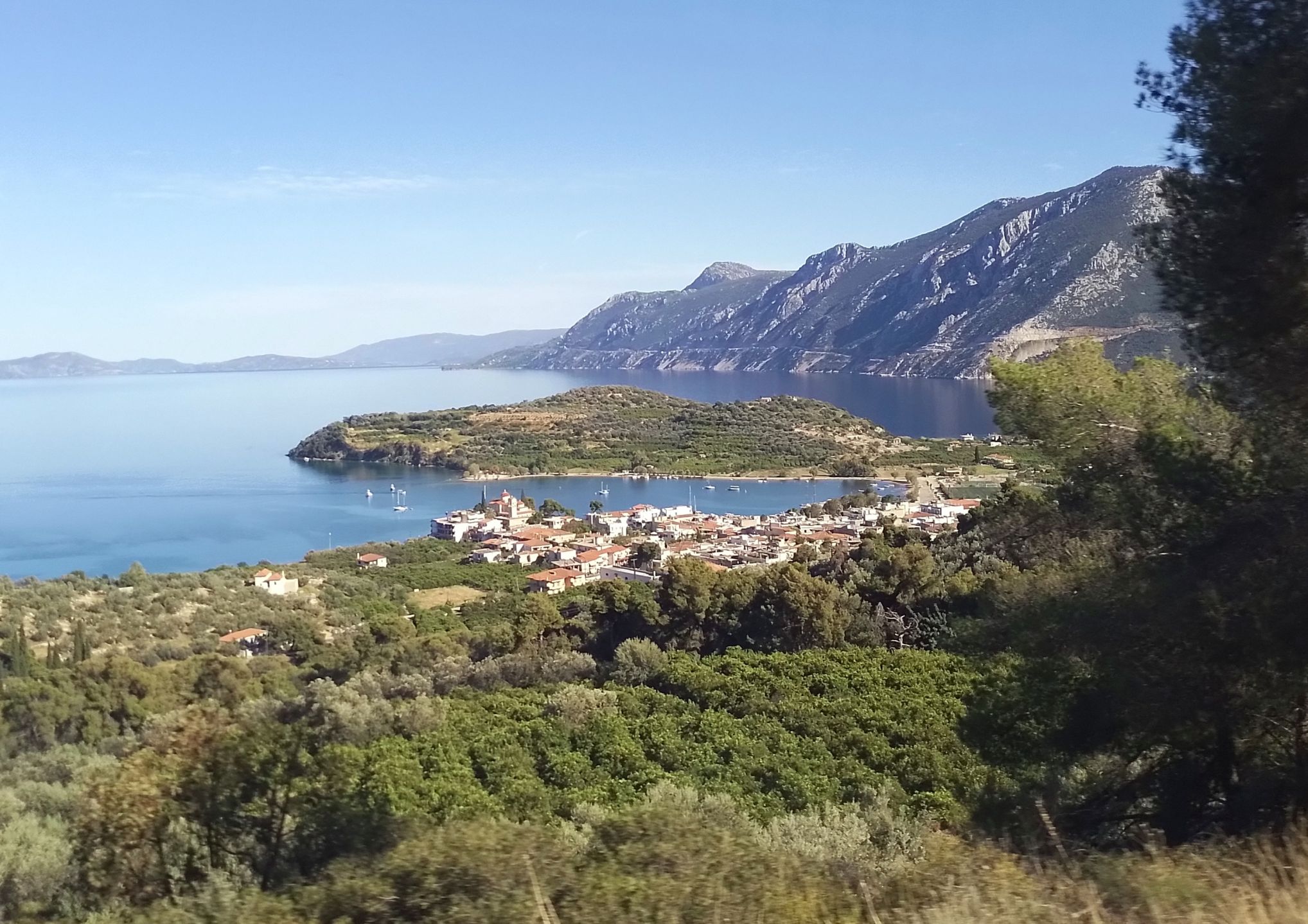
Today, the top draw is the town’s Ancient Theatre, built in the 4th century BC. Constructed from limestone, this is one of the best-preserved Ancient Greek structures in existence, with seating for 14,000 people. The acoustics are extraordinary – drop a coin on the stage and it can be crisply heard from the highest seat. No matter how many old amphitheatres you may have seen, classics like this gracious semi-circular structure never fail to thrill my senses. The dramatic performances staged in this theatre were watched by patients, during their stay at the healing centre. Yes, culture is a healer. There’s a glorious old ancient stadium also on site, built a century before the theatre, which would host naked athletic contests, in honour of the god of medicine. But like the Olympc games, which were held in honour of Zeus, the Epidaurus festival was abolished by the Romans after converting to Christianity.
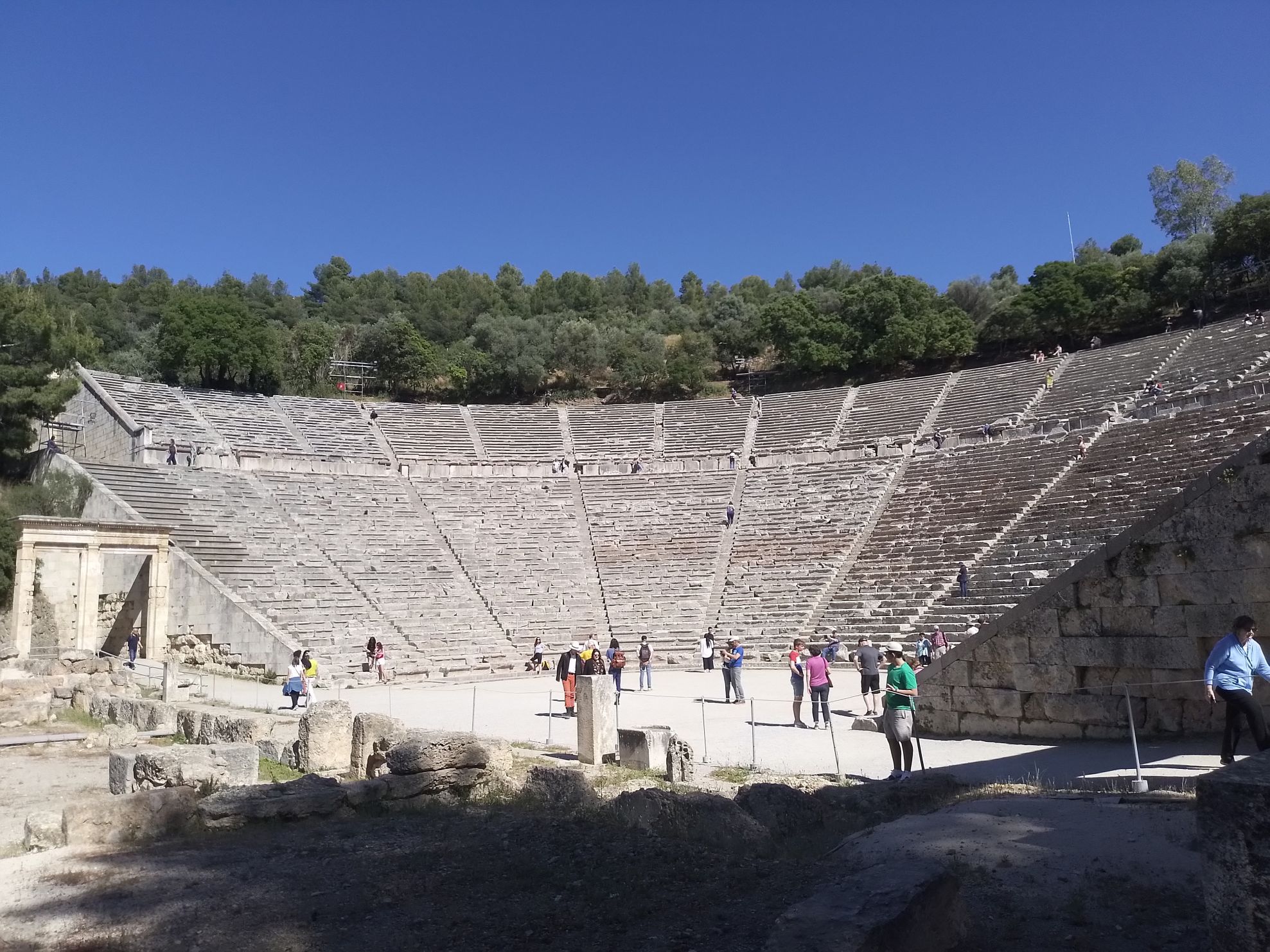
Just twenty minutes down the coast, Nafplio will sweetly seduce you. It’s one of Greece’s most romantic cities and was actually the first capital of the newly born Greek state back in the 1820s. This infatuating Peloponnesian port town is compact, cozy, elegant and strollable. According to mythology, the town was founded by the son of god Poseidon. Soldiers from here participated in the Argonautic expedition and the Trojan War alike. Ancient walls, medieval castles, monuments and statues, Ottoman fountains and colourful Venetian mansions all mingle in this layered town of architectural eye-candy. mesmerize the visitor with their unique architecture and beauty.
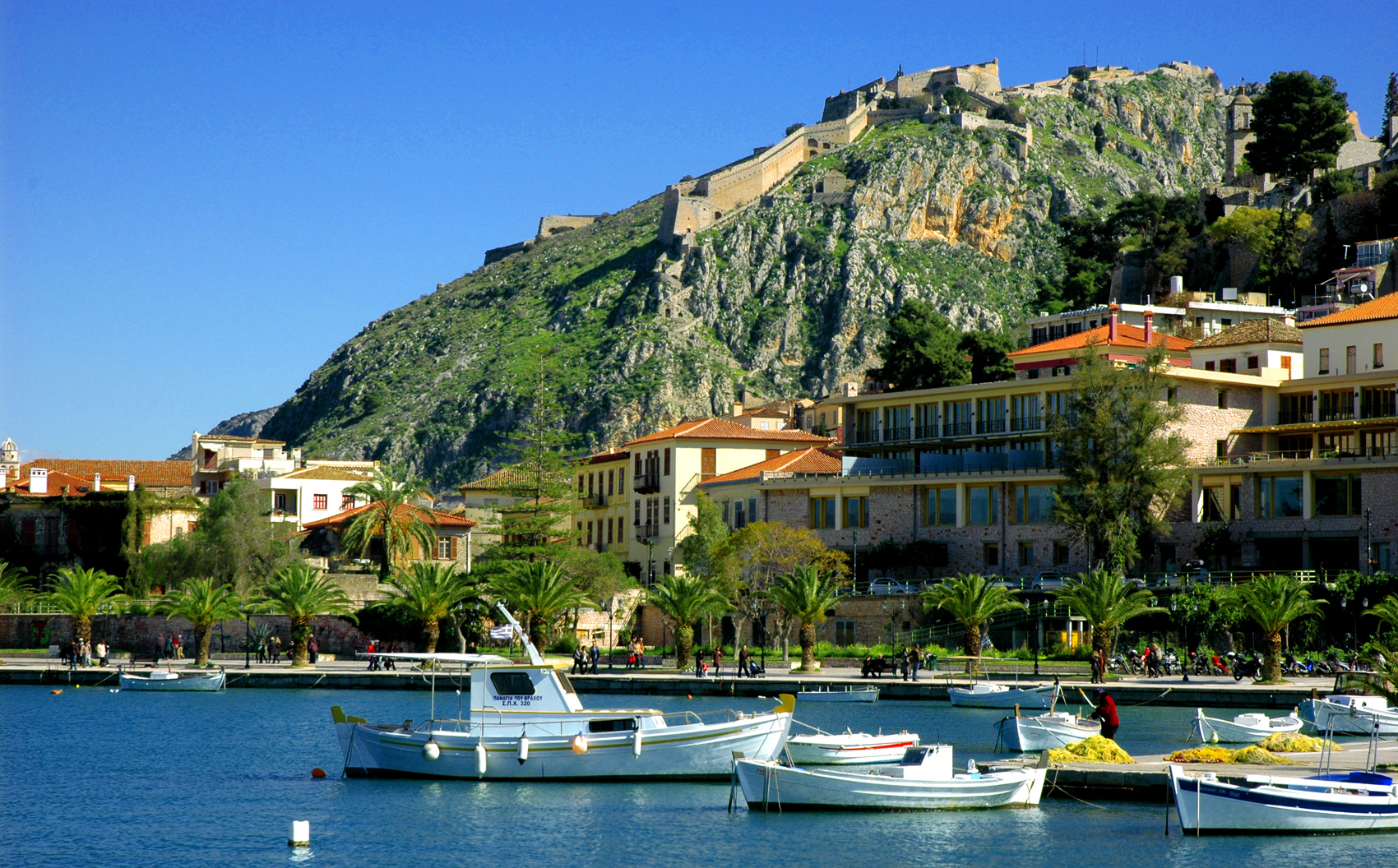
Take a seat along the waterfront strip which is packed with cafes and tavernas, or in the buzzy hospo scene around Syntagma Square. Order up some octopus, calamari and a classic Greek salad -horiatiki. Greek salads never include lettuce or peppers, but tomatoes, cucumber, generous dollops of feta, olives, oil, red-wine vinegar and oregano. Baklava is a much-loved sweet treat across the Aegean, but the local variation in these parts well worth trying is raisin baklava. Yamas!
If you’re browsing the Old Town’s souvenir shops, why not buy a local komboloi? This circular chain with amber beads, is Greece’s version of worry beads, which the locals use to keep their hands occupied and to ease stress. Komboloi is a big deal here, because Nafplio is famed for its amber production. The most photographed spot of Nafplio is Bourtzi, the small Venetian fortress perched on the rocky islet at the port entrance. During Venetian rule, a colossal metal chain was draped across the water to the fortress, to prevent enemy ships from coming ashore.
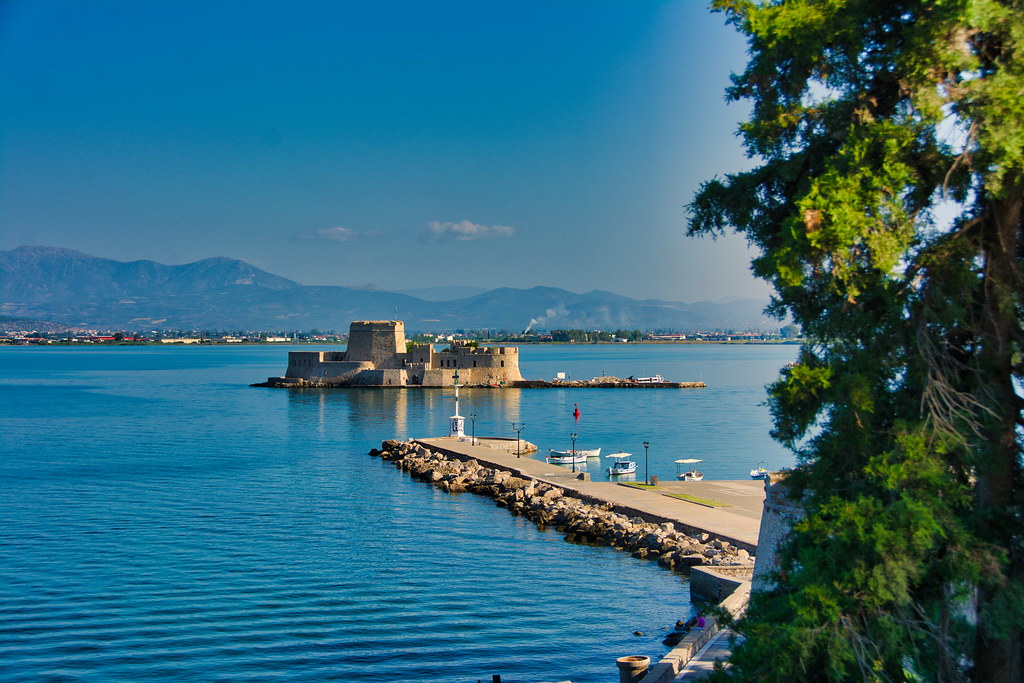
Heading inland from Nafplio, if you’re a history-hound, Mycenae will blow your mind. The ancient Mycenaean civilisation dominated Greece a thousand years before the Golden Age of ancient Athens. On a hilltop backed by powerful mountains stand the sombre and mighty ruins of Ancient Mycenae. It was the home of Agamemnon, the legendary king who commanded the Greeks during the Trojan War. For four centuries in the second millennium BC, this powerful Bronze Age kingdom held sway over the whole region. In the 9th century BC Homer told in his epic poems, 'Iliad' and 'Odyssey', of ‘well-built Mycenae, rich in gold.’ They weren’t just beautiful legends, but accounts of history. The World Heritage-listed ruins you see today date back to 1400 BC.
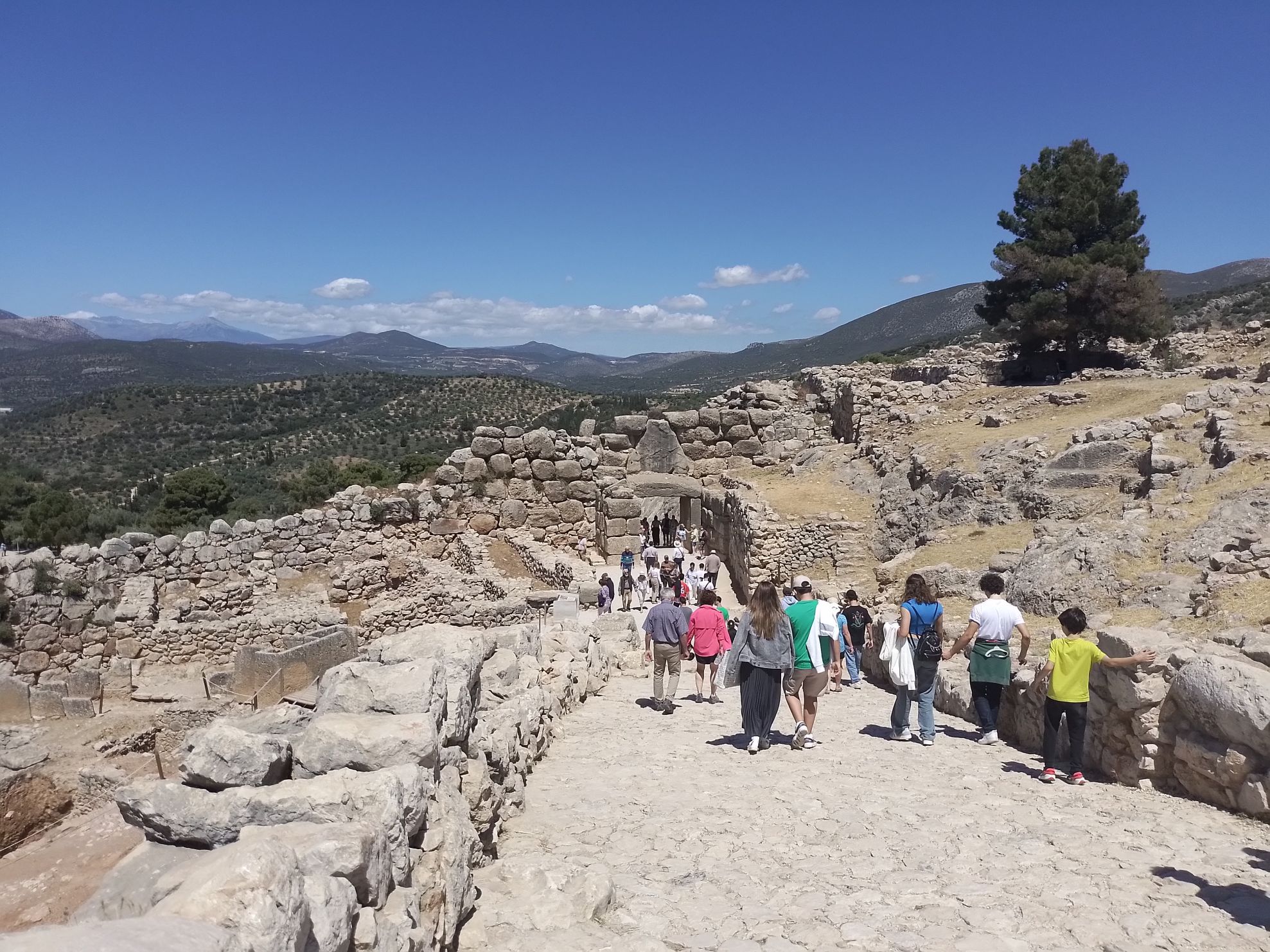
What really staggered me is the sheer size of the Citadel walls, which have been called “Cyclopean” walls. 13 metres high and 7 metres thick, they are formed by stone blocks weighing 6 tonnes! How did they do it? Legend has it that Cyclops was enlisted to help build Mycenae. You enter the fortress through the dramatic Lion Gate, a solid construction of massive stone blocks over which rear two large lions. It’s the epitome of classic architectural beauty. The remains of the palace can be explored, as can the royal cemetery, from where 3000-year-old gold death masks have been excavated. It’s a remarkable encounter with an ancient empire and their confounding engineering prowess.
At the entrance to the Peloponnese, the Corinth Canal stands as a stirring engineering marvel. Well worth a photo stop, it carves a path through the Corinth Isthmus, which links the Aegean and Ionian Seas and enables a 400km short-cut passage to Athens by sea, rather than having to round the peninsula. Emperor Nero was the first to start building the canal in 67AD, but the project was abandoned when he died. Fast-forward to the 19th century and inspired by the Suez Canal, the project finally resurfaced, taking ten years to complete. The Corinth Canal is about 6km long, 52 metres high but just 24 metres wide – meaning it can only be used by small boats. But from the road bridge, gazing down on those limestone walls, slashed by the turquoise waters of the canal, is insta-gold.
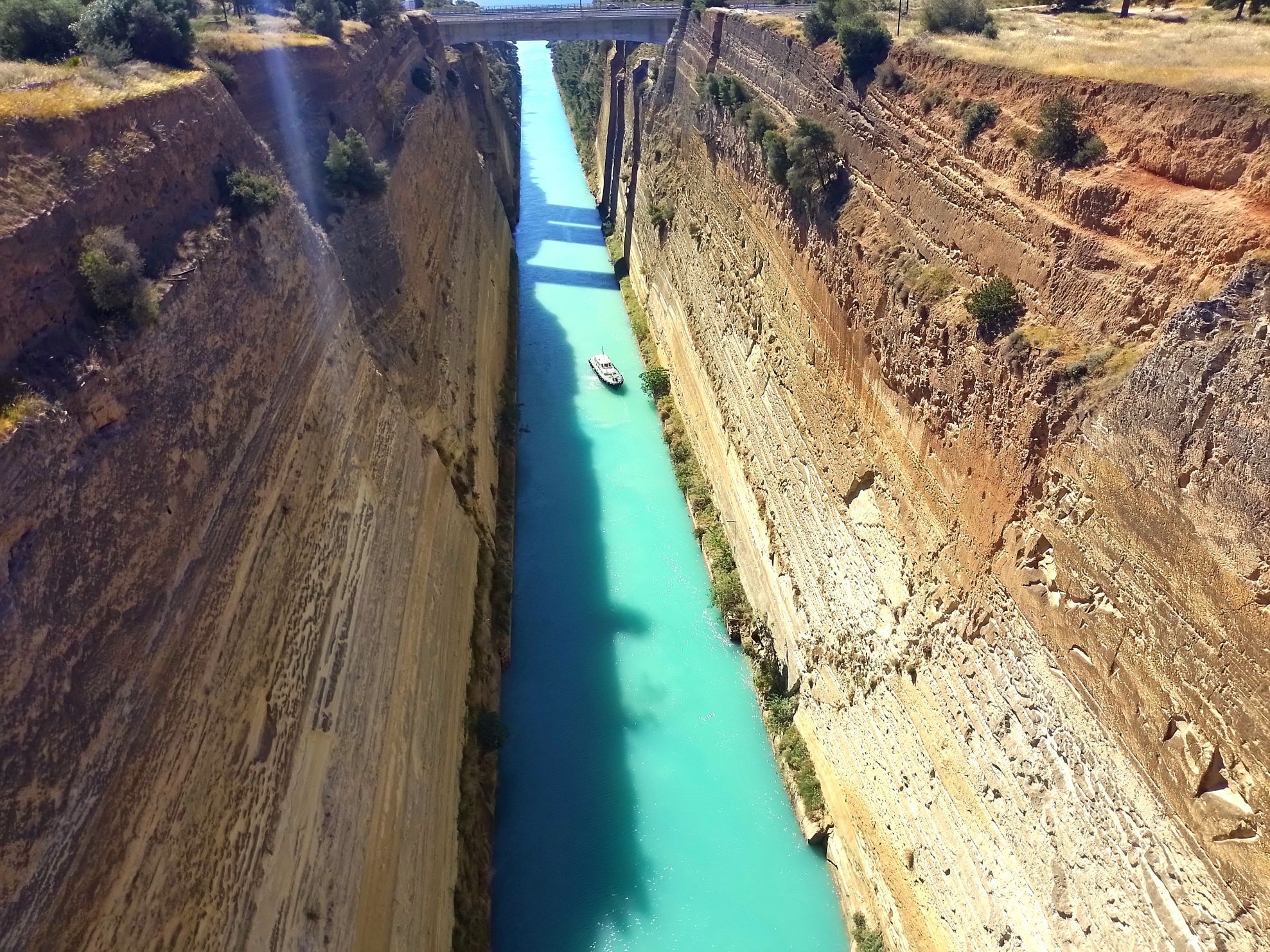
With the Paris Olympics set to begin, why not add Olympia to your check-list? Western Peloponnese, is home to the so-called "valley of the gods." Ancient Olympia grew to be the most celebrated and sacred site for sports in antiquity, starting from 776 BC. For all Greeks, the then known world would be united every four years, with all hostilities suspended so that everyone could take part in this festival honouring the god of Gods, Zeus. Little remains of the majestic temples and athletic facilities today, which were destroyed on the orders of Theodosius II in AD 420AD, along with various subsequent earthquakes. Maybe the heat was getting the better of me, but you do get a hint of the sanctuary’s former glory, wandering amid the tree-shaded ruins, picturing sweaty, oiled-up athletes waiting inside the original stadium. Let the games begin!
Fly to Athens with world-beating Qatar Airways, recently crowned as the World’s Best Airline by Skytrax and AirlineRatings.com, flies non-stop between Doha and Auckland, with onward connections to Athens. On long-haul flights with Qatar Airways, experience an unrivalled standard of Business Class in your very own personal suite with privacy doors. QSuite is available on the daily Auckland service, delivering first-class luxury to the Business Class cabin, including double lie-flat beds. Beyond Doha, Qatar Airways flies to over 170 destinations worldwide. www.qatarairways.com
Mike Yardley is our resident traveller on Jack Tame Saturday Mornings.
Take your Radio, Podcasts and Music with you









